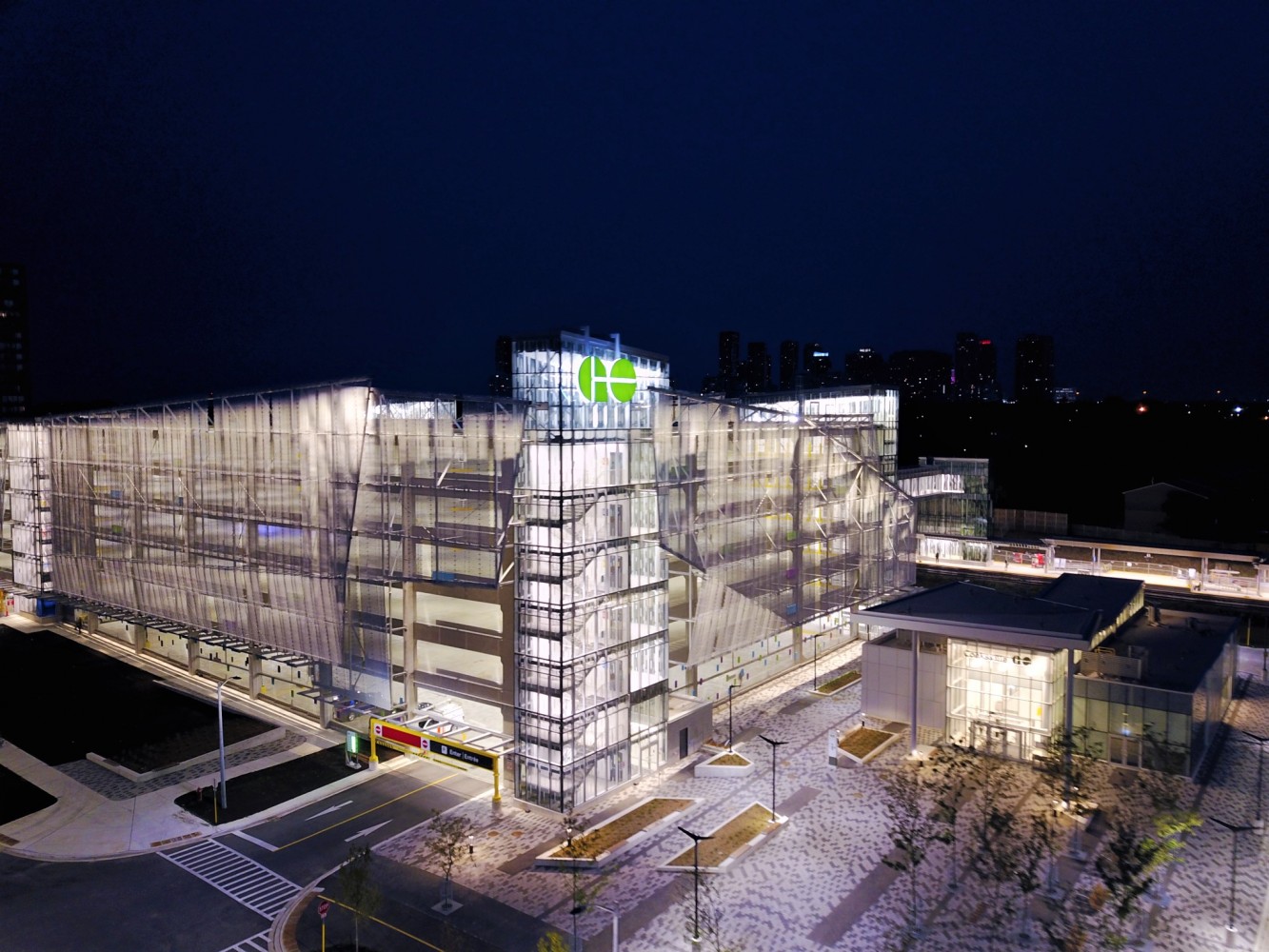
The ‘Missing Link’ would deliver subway-style train service in Mississauga, so why won’t Queen’s Park or Ottawa step up?
In November, a group of politicians and bureaucrats gathered on Zoom, vying for credit as they announced good news. Using a superimposed background, they stood in front of a newly renovated Mississauga GO station in Cooksville.
“I think today’s announcement shows we are committed to building the network for post-COVID when we are all able to get back to our normal activities,” Ontario Minister of Transport, Caroline Mulroney, said.
The big reveal was a preview of the finished product after construction work that began in 2017. A three-year contract for the new station, awarded at $128.4 million, adds accessibility improvements, parking, indoor waiting areas and transit integration with the future Hurontario LRT.
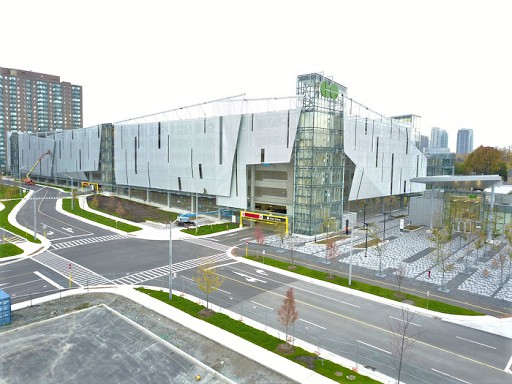
The new parking structure and GO station in Cooksville
The station has been significantly improved, with beautiful streetscaping framing the new design. There is just one thing missing: regular and reliable train service.
According to GO’s September 2020 schedule, just five trains on the Milton Line (the only commuter rail route the station services) stop through Cooksville in each direction daily. In the morning, between 6:32 a.m. and 8:59 a.m., five trains take passengers into Toronto from Cooksville and, between 3:40 p.m. and 7:10 p.m., another five trains leave Union Station to take the same passengers back. For the rest of the day, Cooksville GO train station only sees commuter buses passing through.
It's the same situation for the other five Mississauga GO stations on the Milton Line: Dixie, Erindale, Streetsville, Meadowvale and Lisgar. Instead of subway-style rail service that could feed local bus routes in each of these areas, the stations sit empty for most of the day because of the limited service, making it difficult to grow ridership throughout the day in these Mississauga burroughs, despite continued population growth. This forces dependence on cars when travelling to other parts of the GTA or even Mississauga outside the limited eastbound morning rail service and westbound service in the late afternoon and early evening.
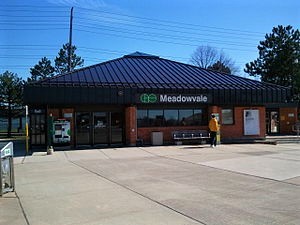
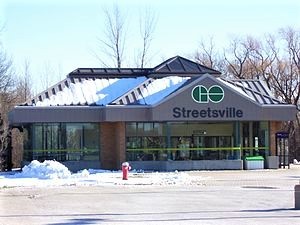
These small Mississauga GO stations on the Milton Line sit empty most of the day.
Go bus service in the 905 and beyond has long been a contentious issue. While smooth, spacious trains humming quietly along uninterrupted tracks draw hundreds of thousands out of their cars, just like other major commuter rail systems around the world, the use of noisy buses that have to compete for space on roadways dominated by other vehicles, is not a viable alternative for many who instead choose to continue climbing into their comfortable, climate-controlled automobiles.
It’s a frustration for Mississauga. The lack of access to rail lines has been an unsolvable bottleneck for decades.
A city with grand aspirations to become North America’s first ‘suburb’ to shed that label while growing into a major urban destination, has struggled to create a world class transit system.
Some of the continent’s largest developments are transforming Mississauga, including the massive 37-tower Oxford Properties’ redevelopment of the downtown, the Rogers M City nine-tower project across from City Hall, and an entire corridor of towering developments along the city’s lakeshore, which will completely reshape the look and feel of the once sleepy bedroom community.
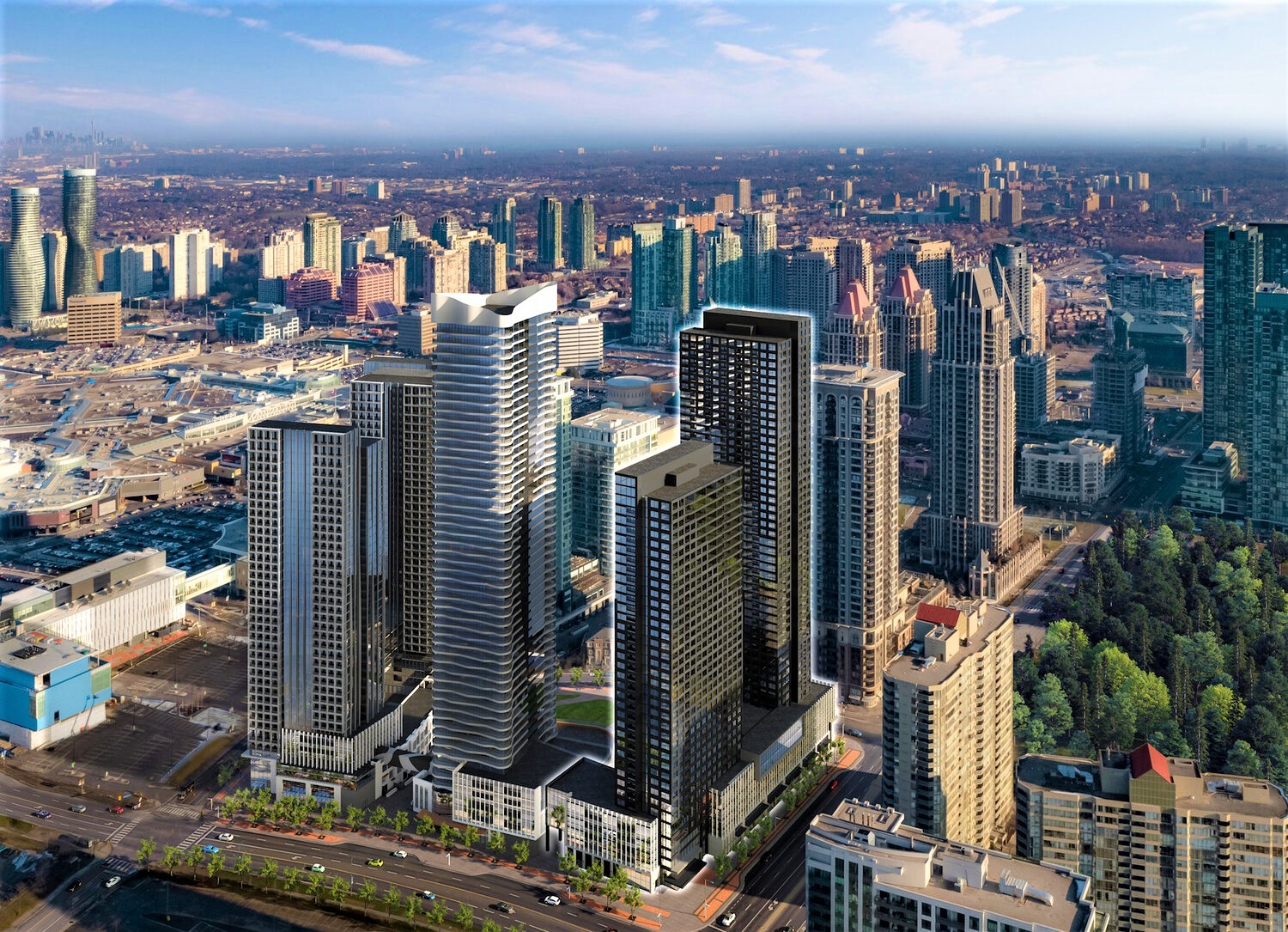
The giant, towering Oxford Properties development will be built just north of the Cooksville GO station.
The city will soon house a million residents, one of the largest urban centres in Canada.
But standing in the way of Mississauga’s vision to become a cosmopolitan international destination for corporations and residents, is the lack of high order transit. The Hurontario LRT will be the first true piece of this type of transit infrastructure within the city, but it is just one north-south corridor set to end at Steeles Avenue, and the quietly rendered decision by the Province to dramatically reduce its frequency further limits its potential.
A truly integrated commuter network to connect Mississauga with the entire GTHA region and other hubs such as Kitchener-Waterloo, which would drive private-sector investments, jobs and dynamic residential growth, remains a dream.
Even with current trains going only in one direction for short periods of the day, Cooksville GO has some of the highest ridership in Peel. According to GO Transit figures collected between April and December 2019, Cooksville GO has an average of 2,800 daily riders. Those figures compare favourably to 2,700 daily riders at Port Credit GO, which is on the busy Lakeshore West Line and where trains run every 30 minutes all day and every 15 minutes at rush hour.
A total of 5,000 daily riders frequent Clarkson GO station, illustrating just how well used the Milton Line could be if it shared Lakeshore West’s service levels.
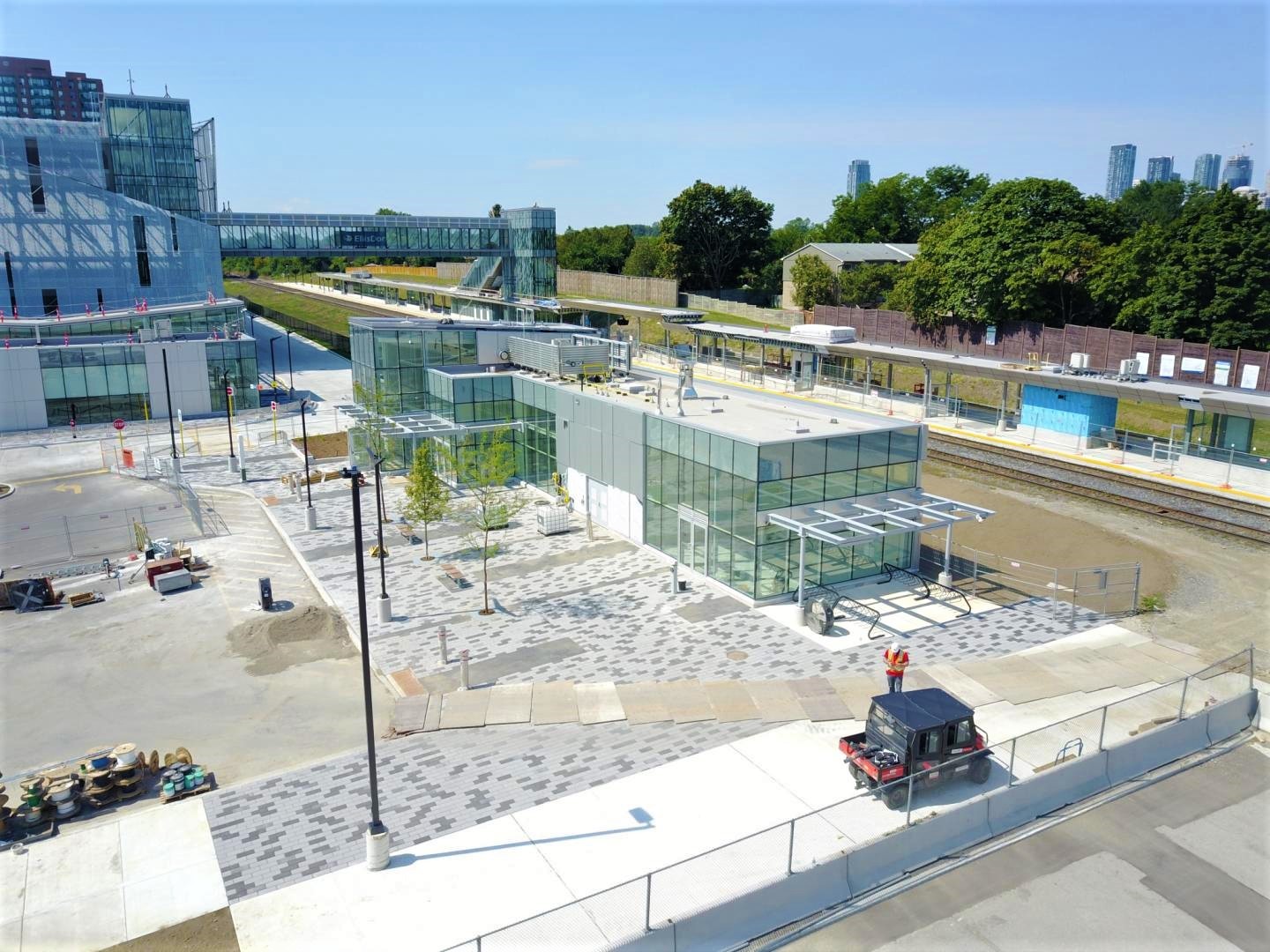
A view of the new Cooksville GO station with the platform next to the rail line.
The decision to pour more than $100 million into redesigning the Cooksville GO station illustrates how Metrolinx and the Province have struggled to get away from GO Transit’s origins.
When the service launched, in the 1960s, Ontario lived and died by the sprawl-inducing theory of suburban commuters. With highways filling up, GO trains offered a direct alternative, telling commuters to drive to stations instead of highways.
As the years went by and theories of transit integration took priority, the network began to evolve and became more dynamic. In Toronto, in particular, heavy integration between streetcars, buses and other GO networks make it easy to use the train without a car, but in suburbia, there is still an assumption that many riders want to start and end their daily journey in a car. Instead of building GO stations with no parking lots and bus bays for local transit services to deliver passengers at their doorstep, the car is still prioritized in its service model and when hundreds of millions of dollars are invested in giant parking lots or above-ground structures, like the modern facility at Cooksville opened last year.
Cooksville will be served by the multi-billion dollar Hurontario LRT by 2024 (assuming no delays) and a future Dundas Street bus rapid transit (BRT) route. Instead of putting its efforts into improving service on the Milton GO line or helping Mississauga to further integrate its rapid transit network, Metrolinx and the Province have pumped tens of millions into more parking.
“Customers now have full access to the transformed Cooksville GO Station, complete with an integrated six-level parking structure that adds more than 750 new parking spaces for a total of over 2,500,” November’s media release boasts.
For years, Mississauga Mayor Bonnie Crombie led a charge to ask the Province and Ottawa to put money into the transit line itself, not just its accessories.
GO Transit’s sparse service on the Milton Line is due to Canadian Pacific (CP) Railway’s ownership of the track. As a result, Metrolinx is forced to negotiate access to the route, with lucrative cargo on freight trains given priority over city-building passenger transit. It also means crude oil and other potentially dangerous loads are dragged behind heavy locomotives through Meadowvale, Streetsville, Erindale, Cooksville, Dixie and the heart of Toronto.
At the beginning of her first term as mayor, Crombie brought together a variety of stakeholders and created a business case to bring change.
Called the ‘Missing Link’, it outlined how, for a cost at the time of around $10 billion, the federal and provincial governments could build a rail bypass near Highway 407 to send freight from Canadian National (CN) Rail (which owns part of the Kitchener Line) and CP across the top of Toronto, leaving the Kitchener and Milton Lines free to run GO trains to meet commuter demand. The costly move, if successful, would take the Milton Line from five trains per day to service every 15 minutes, if there was enough demand.
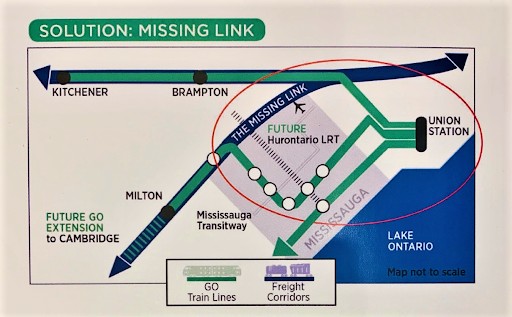
“The vast majority of advocacy work had occurred between 2014 and 2018. And we thought we were so close,” Crombie told The Pointer. The mayor listed off meetings with the Prime Minister, Premier, MPs, MPPs, other cities and “any elected representatives” she met with as key opportunities she used to push the idea of a Missing Link.
But, in 2018, the Liberals were booted from Queen’s Park as voters gave Doug Ford and his deficit-cutting agenda a stonking majority. Just over a year later, the Liberals in Ottawa found themselves heading a shaky minority government and seemed to have lost their appetite for the multi-billion-dollar rail plan.
Concerned with the changing political landscape, advocacy was scaled back. The scythe Ford swung during his first year-and-a-half in office cared little for previous commitments. Electric car subsidies and commitments to protect ecosystems were just two of the many policies Ford moved away from.
“My primary priority and concern was to ensure that the [Hurontario] LRT would remain funded,” Crombie said, citing the necessary funds for Ford’s pet project, the Ontario Line rail system, as a potential threat. “Did that compromise the LRT projects in Peel, in Mississauga and in Hamilton?”
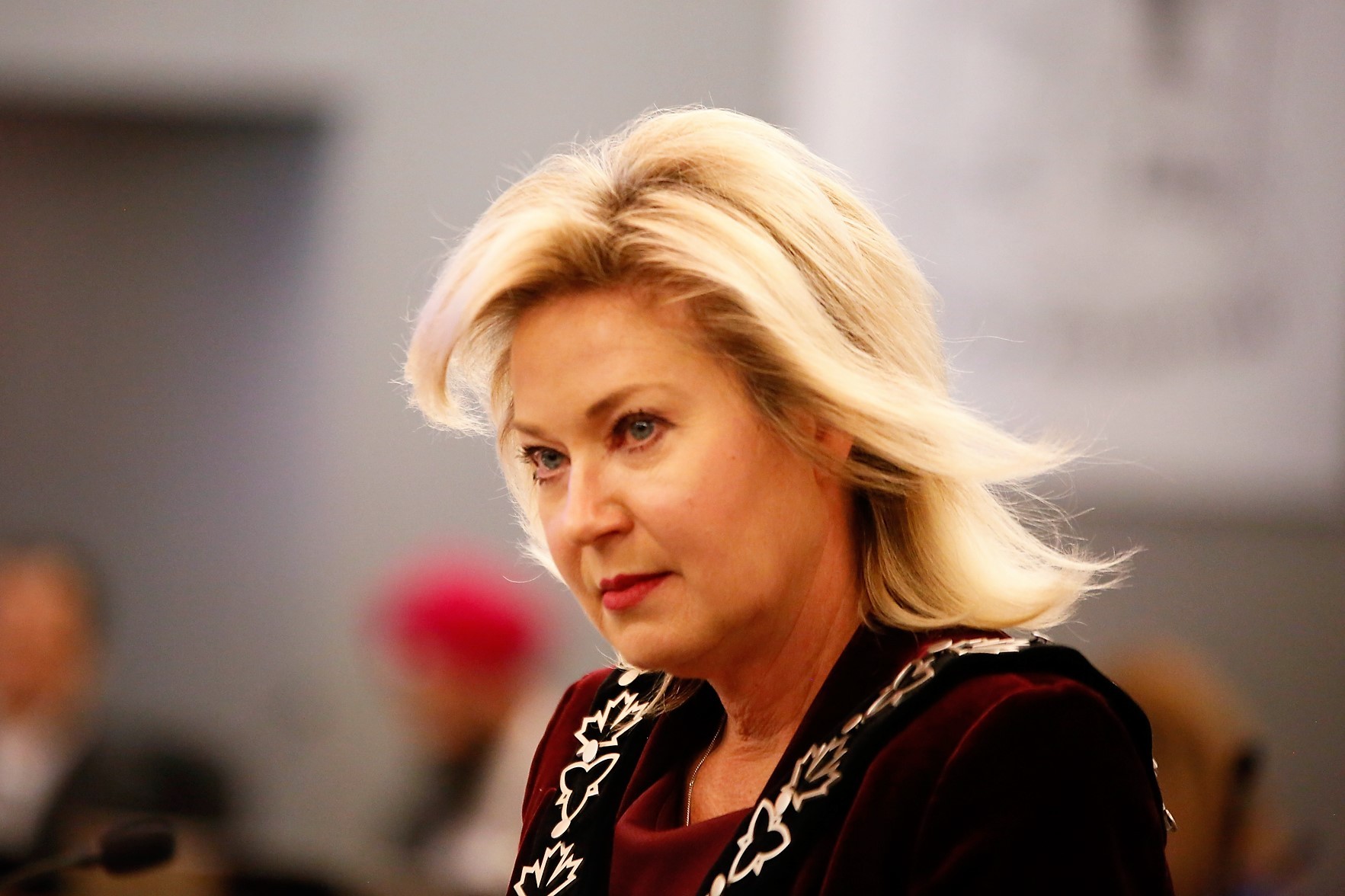
Mississauga Mayor Bonnie Crombie says she's still pushing for the 'Missing Link'.
The Hamilton LRT was cut by Ford, while the length and frequency of the Hurontario LRT suffered too.
With medians removed from Hurontario Street and a multi-billion dollar contract signed, Mississauga’s project looks safe in its current form. The City does need more money for its Dundas Bus Rapid Transit vision and Crombie remains cautious, saying the current administration in Queen’s Park just doesn’t seem to have the appetite for something as ambitious (and expensive) as the Missing Link.
“The focus became a little more local, but notwithstanding that, the Missing Link… continues to be a priority for us,” she said. “We haven’t forgotten about it in the least.”
Where the Ford government may not have demonstrated an appetite for big capital transit projects, it is busy pouring billions of dollars into another Peel Region transportation plan. The GTA West Corridor, restarted by Ford after it was scrapped in 2018, has a cost of $6 billion, based on 2012 numbers, and will tear through farmland and edge along and through parts of the Greenbelt if it is constructed.
Also known as Highway 413, the project has been decried by environmental groups across Ontario. It threatens endangered species, habitats and watersheds in some of the GTA’s last remaining agricultural land.
Despite its routing through a portion of Peel (up the western part of Brampton) and the level of funding attached to it, Mississauga has been relatively quiet on the project. It’s not our problem, has been the approach.
“I mean [provincial leaders] have been very generous to Mississauga, I’m not denying that,” Crombie said. “Whether I could make the case that the money being spent on the GTA West Corridor would be better spent on public transit or to build the Missing Link, I would love to try, but I think they’re committed to the GTA West Corridor.”
The role of MPs and MPPs in this advocacy and decision making picture is unclear.
As locally elected representatives, all 12 Mississauga MPs and MPPs should be banging the drum aggressively for a project that would effectively bring subway-style service to their city. Despite being keen to show their faces at announcements, few have publicly demonstrated leadership on the file.
"This is great news for Cooksville and for those who reside in the Mississauga area," Kaleed Rasheed, PC MPP for Mississauga East–Cooksville, said when the new GO station opened. "With connections to the Milton train line and local transit, the redeveloped Cooksville GO will be a key transit hub and a base to travel across Peel, Halton and Toronto."
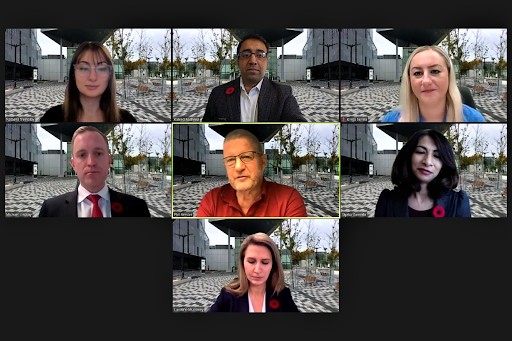
Left to right, top to bottom: Natasha Tremblay (press advisor), Mississauga PC MPP Kaleed Rasheed, Ontario Associate Transport Minister Kinga Surma, Michael Lindsay (CEO Infrastructure Ontario), Phil Verster (CEO Metrolinx), Councillor Dipika Damerla and Ontario Transport Minister Caroline Mulroney
It is hard to justify how a station served by a total of 10 trains per day will be “a key transit hub” until frequency on the Milton Line is dramatically improved.
Crombie is clearly caught in a challenging negotiating position.
“We advocate to them, but at the end of the day, they make the decision on their priorities,” she said, pointing out that the parliamentary system in Canada favours party priorities over local needs. MPPs in Mississauga are Progressive Conservatives first and local champions second, while MPs are Liberals first and Mississaugans second. That’s just the way it is in today’s politics, she said.
“Your leader sets the agenda and you work as a team to advance that agenda,” she said, drawing on her own experience as a former Liberal MP. “And, yes, we’ll brief them on our issues, so they do advocate — they do advocate, I know our MPs and MPPs advocate for our issues, I’ve heard them — but at the end of the day, the decisions are made at the cabinet table.”
The one brightspot may be Omar Alghabra, the Mississauga Centre Liberal MP, recently elevated to the position of Minister of Transport. Crombie says that, in the short time since he took over the file, he has spoken to her on three separate occasions about the Milton Line and Missing Link.
News from Metrolinx and the Province has not been positive. “Milton is a very important line for us and we’ve increased service about 30 percent over the last few years on the line,” Mulroney told The Pointer in November. “We are working towards two-way, all-day GO on core sections of the network.”
Phil Verster, CEO of Metrolinx, was equally vague. Asked about two-way, all-day GO on the Milton Line he simply explained the situation with CP, referencing negotiations that would fit into plans that “stretch 10, 15, 20 years into the future.”
Less than a fortnight later, on November 23, Verster cancelled a scheduled 30-minute interview with The Pointer, citing a busy calendar. Metrolinx did not offer to reschedule the interview when asked.
The future of the Milton Line is unclear but its potential to elevate transit service in Mississauga remains unfulfilled. As the city increases its density and moves closer to its lofty urban ambitions, that needs to change. Canada’s climate commitments and the need to get commuters out of their cars won’t change.
For residents living along its route, shiny new stations and massive parking structures create the impression of progress. Perhaps, when the Hurontario LRT begins ferrying passengers past the empty station, Queen’s Park will rethink its priorities.
Email: [email protected]
Twitter: @isaaccallan
Tel: 647 561-4879
COVID-19 is impacting all Canadians. At a time when vital public information is needed by everyone, The Pointer has taken down our paywall on all stories relating to the pandemic and those of public interest to ensure every resident of Brampton and Mississauga has access to the facts. For those who are able, we encourage you to consider a subscription. This will help us report on important public interest issues the community needs to know about now more than ever. You can register for a 30-day free trial HERE. Thereafter, The Pointer will charge $10 a month and you can cancel any time right on the website. Thank you.
Submit a correction about this story


